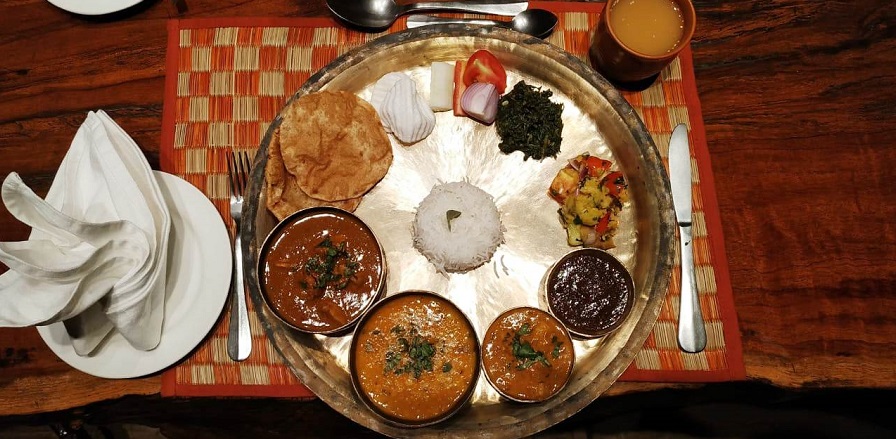Usually, national parks are popular for their natural beauty and wildlife adventures. But, can you guess the other factor which adds to your trip experience? Well, it’s none other than the persistent food traditions which are mainly inspired by the tribal culture. If you enjoy trying regional dishes and are a foodie at heart, then you must definitely try out the “Baiga Thali” served at the Bandhavgarh National Park which is being served here for the past several years along with the feel of Baiga culture. It is a treat for tourists to enjoy this freshly cooked Thali, which serves a menu of foods consumed by the Baiga people. This indigenous tribe of Madhya Pradesh is found in pockets of Uttar Pradesh, Chhattisgarh, and Jharkhand. Their largest community is in Mandla and Balaghat Districts.
So, if you are planning your trip to Bandhavgarh this festive season don’t forget to relish its authentic cuisine and culture!!
Delectable Cuisine
Most of the staple ingredients of Baiga cuisine consist of coarse grains like Kodo millet and kutki, with very little flour being used. Another staple food of the community is Pej. It is a drink that is prepared from ground macca or the water left from boiling rice. This drink will help the body keep cool.
In Baiga cuisine, the Mahua flower is used in numerous ways. Besides being popular among Baiga tribe members, Mahua beverages (made from sun-dried mahua flowers) are also used to make holy water and elixir during various ceremonies and festivals. There is a tradition to offer this beverage to every guest and relative visiting the house by the host. Also, the sun-dried chopped Mahua flower is added in their sweet dishes, and the oil which is extracted from the flower is used in cooking and by the elderly to cure joint pain.
Traditional Culture
Baiga women wear dhoti to cover their body whereas Baiga men, on the other hand, wear truss and cover their head with a piece of cloth. During the times of special occasions, men wear haptos and patka which is a shirt, a small piece of cloth around their waist, and jacket and heads covered with a turban. While women, on the other hand, wear saris and are fond of wearing silver jewellery and ornaments.

